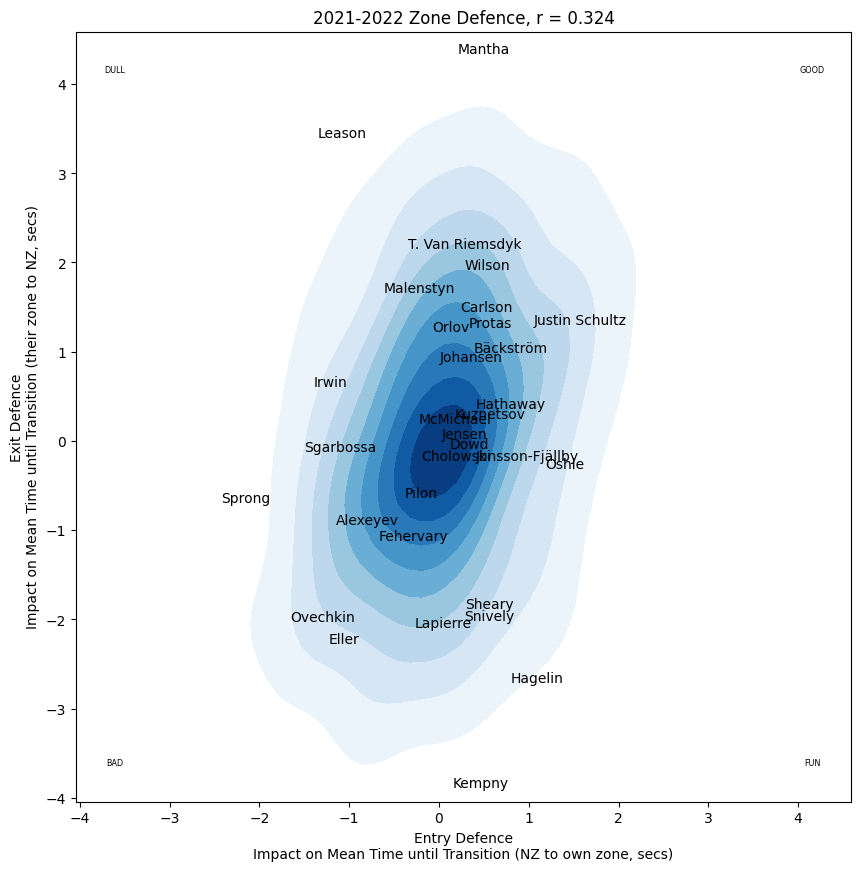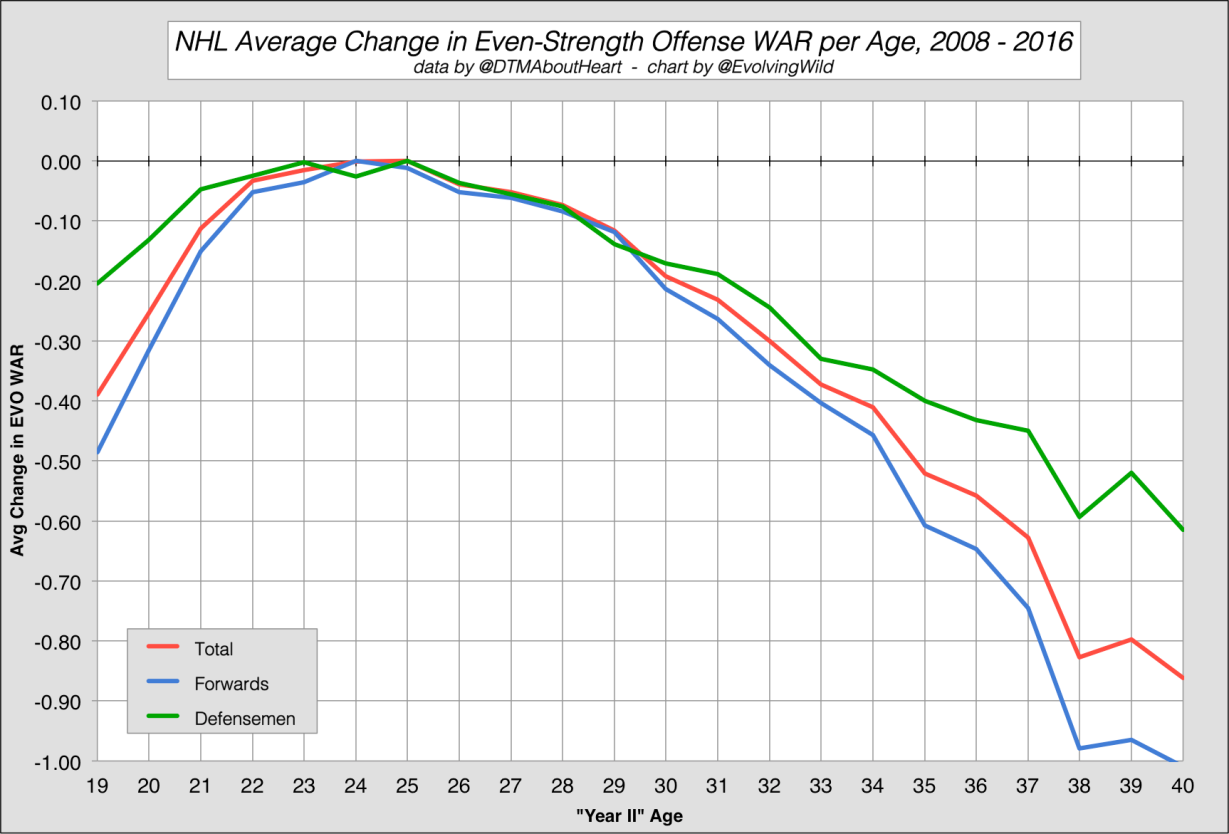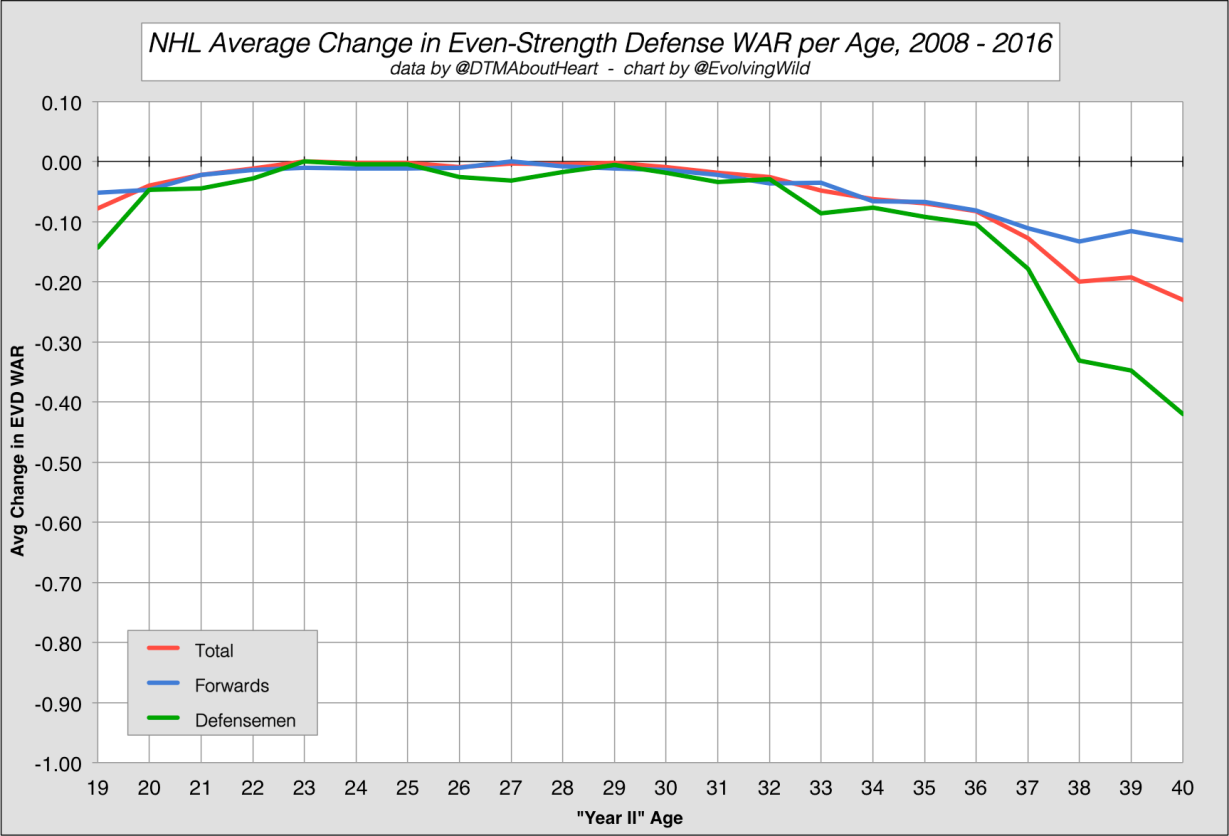Sorry for the delay.
I went ahead and did the following: I took every player-season from every defenseman from 2007-08 until 2021-22. For each season, I took the top 120 TOI player-seasons. This gave 1800 player-seasons.
Of these 1800 player-seasons, I further culled them by taking the first instance of a player under the age of 23. For instance, Aaron Ekblad has been in the top 120 TOI seasons since he entered the league, so I only considered his age 18 season (2014-15) to start.
This gave me about 109 players under the age of 23 who both got "top 4" minutes but also have more records in the database. For instance, Martin Fehervary has the former (an age 22 season with top 4 minutes) but does not yet have a subsequent season to compare to. So he's not a part of this dataset, which makes sense because we are trying to forecast his future based on last season. I took the WAR/60 of the first instance of a player under 23 getting top 4 minutes.
I then took the cumulative WAR/60 of these players following their initial top 4 season as a comparison. For instance, I took Aaron Ekblad's 2014-15 WAR/60 and plotted it against his 2015-16 thru 2021-22 cumulative WAR/60. I did this for each of the 109 players. Here is the scatterplot:
View attachment 553804
A few notes:
1. The correlation coefficient of this dataset is about r = .44, and r^2 = 0.19. This is actually a somewhat stronger correlation than I was expecting. The trendline is also shown in blue.
2. Martin Fehervary's WAR/60 in his first Top 4 year (e.g. this past year) was -0.016.
3. In the plot above, the red line represents the median top 4 player's subsequent WAR/60 (about 0.04).
Overall, I think this kind of further supports what I've been saying. Most players under the age of 23 who played a lot of minutes and had initial results similar to Fehervary never really progressed to becoming above average top 4 players. That's not to say they flame out of the league (though many did), but it's more to say most of them become expendable.
I think Washington needs to consider that Fehervary may not progress into much more than a third pairing talent for his career, especially if he doesn't improve next year. Next year will be key, and I think by the time they reach the TDL they should know much more about his projected future.









:format(webp):no_upscale()/cdn.vox-cdn.com/uploads/chorus_asset/file/23531762/Fehervary4.png)